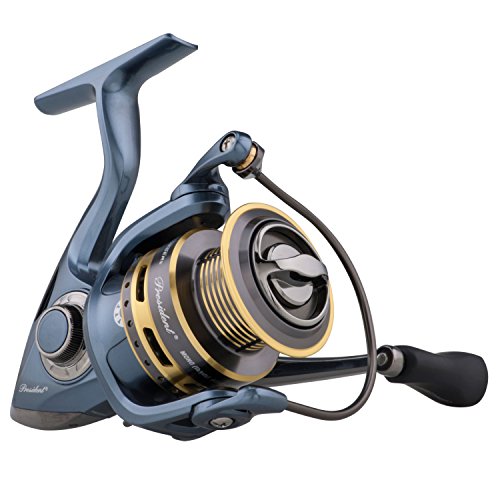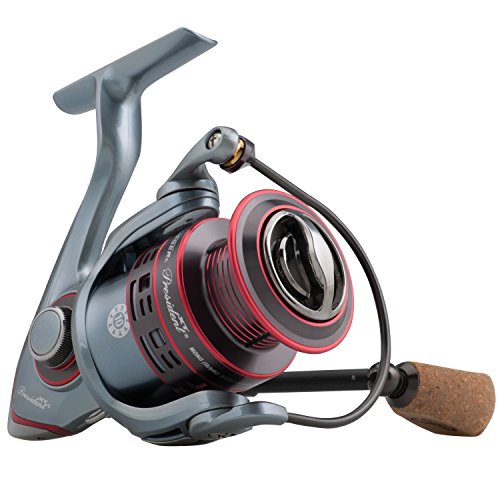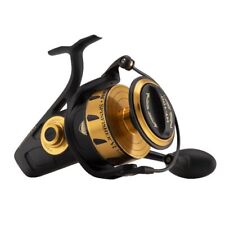Introduction: Are You Ready to Tackle River Smallmouth Bass?
Fishing for smallmouth bass in rivers is an exhilarating pursuit that challenges anglers of all skill levels. These feisty fish are known for their aggressive strikes and aerial acrobatics, making them a sought-after quarry in freshwater fisheries. As you cast your line into the flowing waters, you're not just fishing; you're part of a dynamic ecosystem, requiring knowledge, skill, and a touch of river magic to succeed.
In this comprehensive guide, we'll dive into the techniques, tactics, and insights that will elevate your smallmouth bass fishing game to new heights. Whether you're a seasoned angler or a novice looking to hook into your first river smallie, this article will have you itching to wade into the current and cast your line with confidence.
Key Takeaways
- Smallmouth bass fishing in rivers requires understanding their habitat preferences, such as water temperature, current speed, and structure.
- Proper lure selection and presentation techniques, including crankbaits, spinnerbaits, and soft plastics, are crucial for enticing river smallmouth bass.
- Gear and tackle choices should include medium-power rods, spinning or baitcasting reels, and braided line with a fluorocarbon leader.
- Reading river dynamics, using electronics, and employing live bait strategies enhances your ability to locate bass in current.
- Understanding smallmouth bass biology, conservation, and their role in river ecosystems fosters responsible angling practices.
- Famous river destinations like the St. Lawrence and Niagara rivers offer exceptional smallmouth bass fishing experiences.
- Practice ethical fishing, including catch-and-release, to ensure the sustainability of smallmouth bass populations and river ecosystems.
Where to Find Smallmouth Bass in Rivers
Understanding the habitat preferences and behavior of smallmouth bass is key to locating them in rivers. These fish are often referred to as "bronze backs" due to their brownish-bronze color, and they thrive in a variety of river conditions.
River Smallmouth Bass Habitat
-
Water Temperature: Smallmouth bass are comfortable in a wide range of temperatures, but they especially favor waters between 65°F and 75°F (18°C and 24°C). During the spawning season, they move to shallower areas with gravel or rocky bottoms, where the water temperatures are typically a few degrees warmer.
-
Current Speed: While they can be found in various current speeds, smallmouth bass often prefer areas with moderate to slightly faster currents, especially where there is structure or cover providing an ambush point.
-
Cover and Structure: Smallmouth bass are attracted to cover and structure, such as submerged logs, rocks, ledges, and underwater vegetation. These features provide hiding places for both the bass and their prey. Current breaks, where the water slows momentarily, are particularly attractive, as they offer bass a resting spot while still providing access to faster currents for feeding.
River Features to Target
-
Pools and Eddies: Pools are deeper sections of a river, often found below rapids or riffles. They offer smallmouth bass a resting place and a refuge from stronger currents. Eddies, which are circular currents that flow upstream, are also attractive to bass, as they provide a current break and often hold prey items.
-
Current Seams: These are the boundaries between faster and slower currents. Smallmouth bass often position themselves along these seams, facing into the current, ready to ambush prey that gets swept past them. Casting your lure along these seams can be highly productive.
-
Submerged Structures: Submerged logs, boulders, and other structures create breaks in the current and provide cover for smallmouth bass. They are often located near drop-offs or along the edges of channels. Fishing around these structures can be very rewarding.
Seasonal Patterns
-
Spring: As the water warms, smallmouth bass become more active, and they move into shallower areas with gravel bottoms to spawn. Target the upstream ends of pools and look for warmer tributaries entering the river.
-
Summer: During hot summer days, smallmouth bass may seek deeper holes and cooler waters, especially in rivers with reduced flow. Fish the deeper sections of pools and near submerged structures.
-
Fall: This season offers excellent fishing as bass feed aggressively before winter. Target current seams and structure, and don't be afraid to fish into the evening, as bass may become more active during lower-light conditions.
-
Winter: Bass slow down in their movements but can still be caught on warmer winter days. Focus on deeper holes and slower currents, and try vertical jigging or working lures slowly along the bottom.
Techniques for River Smallmouth Bass Fishing
Lure selection and presentation techniques are critical to success when targeting river smallmouth bass. These fish are opportunistic feeders, and the right lure choice can trigger aggressive strikes.
Lure Selection
-
Crankbaits: Crankbaits are effective for covering water and imitating baitfish. Choose diving crankbaits that run between 4 and 8 feet deep for rivers. Natural colors like shad or crayfish patterns work well, but don't underestimate bright colors like chartreuse on sunny days.
-
Spinnerbaits: Spinnerbaits create flash and vibration, making them ideal for stained or murky waters. Look for models with willow-leaf blades for faster retrieves in deeper waters, and Colorado or Indiana blades for a slower, wider wobble in shallower areas.
-
Jerkbaits: Suspending jerkbaits mimic injured or fleeing baitfish, triggering reaction strikes from bass. Try a stop-and-go retrieve, twitching the rod tip to impart an erratic action to the lure.
-
Soft Plastics: Soft plastic lures, such as tubes, grubs, and stickbaits, are versatile and effective. Rig them Texas-style or wacky style, and work them slowly along the bottom or through current seams.
-
Live Bait: Live bait, such as minnows or crayfish, can be highly productive, especially when fished naturally with the current. Rig them on a light leader and use just enough weight to maintain bottom contact.
Presentation Techniques
-
Working Lures in Current: When working lures in current, cast upstream and slightly across the current at a 45-degree angle. This allows your lure to drift naturally with the flow, imitating the behavior of prey. Vary your retrieve speed to match the current speed and keep your line tight to detect strikes.
-
Targeting Structure: When fishing around structure, cast upstream and let your lure drift into the target zone. Maintain a steady retrieve, feeling for ticks or pauses that indicate your lure has deflected off structure or been taken by a bass.
-
Retrieving from Eddies: When fishing eddies, cast into the upstream section, letting your lure drift into the slower water. Retrieve with a steady, slow pace, and be prepared for strikes as your lure exits the eddy and enters the faster current.
Fly Fishing for Smallmouth
-
Fly Patterns: Woolly buggers, crayfish imitations, streamer patterns, and poppers are all effective for smallmouth bass. Match your fly size to the expected prey in the river, and don't be afraid to experiment with colors and retrieval speeds.
-
Casting Strategies: When fly fishing for river smallmouth, focus on accurate presentations. Cast upstream and slightly across the current, mending your line to achieve a natural drift. Vary your retrieve speed and try stripping the fly with short, quick movements to mimic fleeing prey.
-
Presentations: Use sinking tip or full sinking lines to get your fly down to the right depth. When fishing deeper pools or targeting structure, allow your fly to sink to the desired depth before beginning your retrieve.
Conclusion: Now You're Ready to Tackle River Smallmouth
In this first section, we've delved into the critical aspects of locating smallmouth bass in rivers, understanding their habitat preferences, and learning how their behavior changes with the seasons. This knowledge will significantly enhance your ability to find and catch these magnificent fish.
Remember, smallmouth bass are adaptable and opportunistic predators, so be prepared to vary your tactics and experiment with different lures and presentations. The more you understand the dynamics of river smallmouth bass behavior, the more successful you'll be.
Stay tuned for the next section, where we'll dive into the gear and tackle that will maximize your chances of landing these hard-fighting fish. Until then, keep studying the river, and get ready for some thrilling smallmouth bass action!
The Ultimate Guide to Smallmouth Bass Fishing in Rivers
Introduction: Are You Ready to Tackle River Smallmouth Bass?
Fishing for smallmouth bass in rivers is an exhilarating pursuit that challenges anglers of all skill levels. These feisty fish are known for their aggressive strikes and aerial acrobatics, making them a sought-after quarry in freshwater fisheries. As you cast your line into the flowing waters, you're not just fishing; you're part of a dynamic ecosystem, requiring knowledge, skill, and a touch of river magic to succeed.
In this comprehensive guide, we'll dive into the techniques, tactics, and insights that will elevate your smallmouth bass fishing game to new heights. Whether you're a seasoned angler or a novice looking to hook into your first river smallie, this article will have you itching to wade into the current and cast your line with confidence.
Where to Find Smallmouth Bass in Rivers
Understanding the habitat preferences and behavior of smallmouth bass is key to locating them in rivers. These fish are often referred to as "bronze backs" due to their brownish-bronze color, and they thrive in a variety of river conditions.
River Smallmouth Bass Habitat
-
Water Temperature: Smallmouth bass are comfortable in a wide range of temperatures, but they especially favor waters between 65°F and 75°F (18°C and 24°C). During the spawning season, they move to shallower areas with gravel or rocky bottoms, where the water temperatures are typically a few degrees warmer.
-
Current Speed: While they can be found in various current speeds, smallmouth bass often prefer areas with moderate to slightly faster currents, especially where there is structure or cover providing an ambush point.
-
Cover and Structure: Smallmouth bass are attracted to cover and structure, such as submerged logs, rocks, ledges, and underwater vegetation. These features provide hiding places for both the bass and their prey. Current breaks, where the water slows momentarily, are particularly attractive, as they offer bass a resting spot while still providing access to faster currents for feeding.
River Features to Target
-
Pools and Eddies: Pools are deeper sections of a river, often found below rapids or riffles. They offer smallmouth bass a resting place and a refuge from stronger currents. Eddies, which are circular currents that flow upstream, are also attractive to bass, as they provide a current break and often hold prey items.
-
Current Seams: These are the boundaries between faster and slower currents. Smallmouth bass often position themselves along these seams, facing into the current, ready to ambush prey that gets swept past them. Casting your lure along these seams can be highly productive.
-
Submerged Structures: Submerged logs, boulders, and other structures create breaks in the current and provide cover for smallmouth bass. They are often located near drop-offs or along the edges of channels. Fishing around these structures can be very rewarding.
Seasonal Patterns
-
Spring: As the water warms, smallmouth bass become more active, and they move into shallower areas with gravel bottoms to spawn. Target the upstream ends of pools and look for warmer tributaries entering the river.
-
Summer: During hot summer days, smallmouth bass may seek deeper holes and cooler waters, especially in rivers with reduced flow. Fish the deeper sections of pools and near submerged structures.
-
Fall: This season offers excellent fishing as bass feed aggressively before winter. Target current seams and structure, and don't be afraid to fish into the evening, as bass may become more active during lower-light conditions.
-
Winter: Bass slow down in their movements but can still be caught on warmer winter days. Focus on deeper holes and slower currents, and try vertical jigging or working lures slowly along the bottom.
Techniques for River Smallmouth Bass Fishing
Lure selection and presentation techniques are critical to success when targeting river smallmouth bass. These fish are opportunistic feeders, and the right lure choice can trigger aggressive strikes.
Lure Selection
-
Crankbaits: Crankbaits are effective for covering water and imitating baitfish. Choose diving crankbaits that run between 4 and 8 feet deep for rivers. Natural colors like shad or crayfish patterns work well, but don't underestimate bright colors like chartreuse on sunny days.
-
Spinnerbaits: Spinnerbaits create flash and vibration, making them ideal for stained or murky waters. Look for models with willow-leaf blades for faster retrieves in deeper waters, and Colorado or Indiana blades for a slower, wider wobble in shallower areas.
-
Jerkbaits: Suspending jerkbaits mimic injured or fleeing baitfish, triggering reaction strikes from bass. Try a stop-and-go retrieve, twitching the rod tip to impart an erratic action to the lure.
-
Soft Plastics: Soft plastic lures, such as tubes, grubs, and stickbaits, are versatile and effective. Rig them Texas-style or wacky style, and work them slowly along the bottom or through current seams.
-
Live Bait: Live bait, such as minnows or crayfish, can be highly productive, especially when fished naturally with the current. Rig them on a light leader and use just enough weight to maintain bottom contact.
Presentation Techniques
-
Working Lures in Current: When working lures in current, cast upstream and slightly across the current at a 45-degree angle. This allows your lure to drift naturally with the flow, imitating the behavior of prey. Vary your retrieve speed to match the current speed and keep your line tight to detect strikes.
-
Targeting Structure: When fishing around structure, cast upstream and let your lure drift into the target zone. Maintain a steady retrieve, feeling for ticks or pauses that indicate your lure has deflected off structure or been taken by a bass.
-
Retrieving from Eddies: When fishing eddies, cast into the upstream section, letting your lure drift into the slower water. Retrieve with a steady, slow pace, and be prepared for strikes as your lure exits the eddy and enters the faster current.
Fly Fishing for Smallmouth
-
Fly Patterns: Woolly buggers, crayfish imitations, streamer patterns, and poppers are all effective for smallmouth bass. Match your fly size to the expected prey in the river, and don't be afraid to experiment with colors and retrieval speeds.
-
Casting Strategies: When fly fishing for river smallmouth, focus on accurate presentations. Cast upstream and slightly across the current, mending your line to achieve a natural drift. Vary your retrieve speed and try stripping the fly with short, quick movements to mimic fleeing prey.
-
Presentations: Use sinking tip or full sinking lines to get your fly down to the right depth. When fishing deeper pools or targeting structure, allow your fly to sink to the desired depth before beginning your retrieve.
Conclusion: Now You're Ready to Tackle River Smallmouth
In this first section, we've delved into the critical aspects of locating smallmouth bass in rivers, understanding their habitat preferences, and learning how their behavior changes with the seasons. This knowledge will significantly enhance your ability to find and catch these magnificent fish.
Remember, smallmouth bass are adaptable and opportunistic predators, so be prepared to vary your tactics and experiment with different lures and presentations. The more you understand the dynamics of river smallmouth bass behavior, the more successful you'll be.
Stay tuned for the next section, where we'll dive into the gear and tackle that will maximize your chances of landing these hard-fighting fish. Until then, keep studying the river, and get ready for some thrilling smallmouth bass action!
Smallmouth Bass Fishing Tips and Tricks
Locating smallmouth bass in rivers involves understanding river dynamics and interpreting water conditions. Here are advanced techniques to help you read the water like a pro and find those hidden bass.
Reading the Water
-
Current Speed and Direction: Pay attention to variations in current speed and direction. Bass often face into the current, waiting to ambush prey. Cast upstream and let your lure drift naturally with the flow, presenting it in the bass's strike zone.
-
Depth and Structure: Learn to interpret water depth and structure. Bass use structure for cover and to conserve energy. Look for changes in depth, such as drop-offs, ledges, and holes, as these are prime hiding spots.
-
Current Breaks: Identify areas where the current breaks or slows, such as behind boulders or along the inside bends of rivers. These provide bass with a resting spot while still offering access to feeding lanes.
Using Electronics
-
Sonar and GPS: Modern electronics, like fish finders with sonar and GPS, can greatly enhance your ability to locate bass. Use sonar to identify structure, drop-offs, and schools of baitfish. Mark productive spots with your GPS to return to them easily.
-
Interpreting Sonar: Learn to interpret sonar returns. Suspended smallmouth bass often appear as arcs or scattered marks off the bottom. Schools of baitfish may appear as clouds or clusters of marks.
-
Waypoints and Mapping: Mark waypoints at productive spots, such as current seams, submerged structures, or drop-offs. Use mapping software to create custom maps of the river, helping you navigate and locate bass-holding areas more efficiently.
Live Bait Strategies
-
Live Bait Rigging: Rig live minnows or crayfish naturally, using light leaders and just enough weight to maintain bottom contact. Hook the bait through the lips or back, allowing it to swim freely with the current.
-
Locating Baitfish: Bass often follow schools of baitfish. Keep an eye out for baitfish breaking the surface or birds diving to feed, as these indicate the presence of baitfish and potential bass activity.
-
Working Live Bait: Cast upstream and let the current carry your live bait naturally. Vary your retrieve speed, occasionally pausing to let the bait drift, mimicking an injured or struggling prey item.
Conclusion: Unlocking River Secrets
Incorporating these advanced techniques into your river smallmouth bass fishing arsenal will significantly enhance your success. Reading the water, understanding electronics, and employing strategic live bait tactics will have you locating bass in even the most challenging river conditions.
Stay tuned for the next section, where we'll delve into the fascinating world of smallmouth bass biology and provide insights that will further improve your understanding of these remarkable fish. Your river smallmouth quest continues to unfold!
Smallmouth Bass Identification and Biology
Understanding the biology and behavior of smallmouth bass is essential for becoming a well-rounded angler. In this section, we'll explore their physical characteristics, life history, and the important role they play in river ecosystems.
Species Identification
-
Physical Characteristics: Smallmouth bass are typically brown or olive-green on their backs, fading to yellowish or white on their bellies. They have a slender body shape and a slightly forked tail. Their eyes are red, and their mouth extends just behind the eye, with the upper jaw falling short of the eye's rear margin, distinguishing them from largemouth bass.
-
Distinguishing Features: Smallmouth bass can be distinguished from similar species, such as rock bass or spotted bass, by their overall coloration and the absence of spots on their tail. Their cheeks may have a faint mottling, but their sides are usually devoid of markings.
| Species | Coloration | Tail Pattern | Mouth Extent |
|---|---|---|---|
| Smallmouth Bass | Brownish-bronze | Plain | Extends just behind the eye |
| Largemouth Bass | Greenish-brown | Redded with dark edges | Extends beyond the eye |
| Rock Bass | Light olive-green | Dark spots | Does not extend beyond the eye |
| Spotted Bass | Dark stripes | Dark spots | Extends just behind the eye |
Life History and Biology
-
Spawning: Smallmouth bass spawn in spring when water temperatures reach the upper 50°Fs to low 60°Fs. Males construct nests by clearing debris from gravel or rocky substrates in shallow waters. Females lay up to 20,000 eggs, which are then fertilized by one or more males. The eggs hatch in 3 to 10 days, depending on water temperature.
-
Feeding Behavior: Smallmouth bass are opportunistic feeders, preying on crayfish, insects, small fish, and amphibians. They have a strong sense of sight and will strike at moving lures or flies that mimic their natural prey. Their feeding behavior can be influenced by water temperature, with bass feeding more actively during warmer periods.
-
Conservation Status: Smallmouth bass are native to eastern North America and have been introduced widely across the continent. While they are not currently listed as threatened or endangered, conservation efforts are crucial to ensuring the long-term health of their populations, especially in the face of habitat degradation and climate change.
The Role of Smallmouth Bass in River Ecosystems
Smallmouth bass play an important role in river ecosystems, occupying the middle to upper sections of the food chain. Here are some key points to consider:
-
Predator-Prey Dynamics: Smallmouth bass are voracious predators, regulating the populations of prey species like crayfish, insects, and small fish. This helps maintain a balance within the ecosystem and prevents any one prey species from dominating.
-
Habitat Engineers: Smallmouth bass, through their spawning activities, create and maintain gravel beds and clear spaces in river bottoms. These modified habitats provide crucial spawning and feeding areas for various species, enhancing biodiversity.
-
Indicators of Water Quality: Smallmouth bass are sensitive to certain pollutants and changes in water quality. Their presence and health can serve as indicators of the overall ecological health of a river system, making them important sentinel species.
Conservation Considerations
Anglers can contribute to smallmouth bass conservation through responsible fishing practices:
- Practice catch-and-release fishing to minimize the impact on bass populations.
- Use barbless hooks or crush barbs to facilitate quick and safe release.
- Handle fish with wet hands to protect their slime coating, which guards against infections.
- Support local conservation organizations and initiatives aimed at protecting and restoring smallmouth bass habitats.
Conclusion: Understanding Breeds Appreciation
By understanding the biology and ecology of smallmouth bass, anglers can develop a deeper appreciation for these remarkable fish. Conservation efforts and responsible fishing practices ensure that future generations can continue to enjoy the thrill of pursuing smallmouth bass in their natural river habitats.
As we near the end of this comprehensive guide, the next section will reveal some of the best river destinations across North America for unforgettable smallmouth bass fishing experiences. Stay tuned for "Productive River Smallmouth Bass Destinations," where we'll explore the rivers that dreams are made of!
"Smallmouth Bass Fishing in Rivers - 5 Tips to Catch More Fish": https://www.youtube.com/watch?v=uI64Q26e6es
Productive River Smallmouth Bass Destinations
Exploring new rivers and discovering hidden smallmouth bass hotspots is part of the thrill of this sport. In this section, we'll reveal some of the top river destinations across North America, offering exceptional smallmouth bass fishing experiences.
Famous River Destinations
-
The St. Lawrence River, New York and Ontario, Canada: The St. Lawrence River is renowned for its smallmouth bass fishing, with abundant populations and trophy-sized fish. Target the countless islands, shoals, and rocky structures for memorable angling adventures.
-
The Niagara River, New York and Ontario, Canada: Flowing between Lake Erie and Lake Ontario, the Niagara River offers exceptional smallmouth bass fishing. Target the fast-moving waters below Niagara Falls for a unique and exhilarating experience.
-
The Susquehanna River, Pennsylvania: The Susquehanna River is a smallmouth bass haven, with abundant structure and productive pools. Fish the deeper sections and target current seams for bass reaching impressive sizes.
-
The James River, Virginia: The James River is known for its healthy smallmouth bass population and scenic beauty. Fish the upper sections for trophy bass and enjoy the stunning Blue Ridge Mountains as your backdrop.
-
The Ottawa River, Ontario and Quebec, Canada: Forming the boundary between Ontario and Quebec, the Ottawa River is a smallmouth bass hotspot. Target the numerous islands, rocky shoals, and rapids for non-stop bass action.
Local River Options
Don't underestimate the smallmouth bass fishing opportunities in your local rivers and tributaries. Here are some tips for exploring closer to home:
- Research local rivers and creeks that offer diverse structures, such as pools, riffles, and cover.
- Talk to local anglers, join fishing forums, or visit tackle shops to gather insights on productive spots and techniques.
- Invest in a good river map or use online mapping tools to identify potential smallmouth bass habitats.
Travel and Lodging
When planning a fishing trip to one of the famous river destinations:
- Research local fishing guides and charter services, who can provide invaluable expertise and enhance your chances of success.
- Consider booking accommodations near boat launches or access points to maximize your time on the water.
- Check local regulations and acquire any necessary fishing licenses or permits.
Conclusion: Adventure Awaits on These River Banks
In this final section, we've revealed some of the top river destinations for smallmouth bass fishing, offering a mix of renowned hotspots and local exploration. Whether you dream of casting your line in famous waters or uncovering hidden gems, these destinations promise unforgettable smallmouth bass adventures.
As you plan your next river smallmouth bass fishing trip, remember to embrace the thrill of discovery, respect the environments you explore, and always practice catch-and-release fishing to ensure these destinations remain productive for future generations.
I hope this comprehensive guide has inspired and equipped you to tackle river smallmouth bass with confidence and success. Now, go forth, cast your line, and create memories that will last a lifetime!
Tight lines and river adventures await!
Frequently Asked Questions (FAQ)
What is the best time of day to fish for smallmouth bass in rivers?
Answer: Smallmouth bass can be caught at any time of day, but they often feed more actively during low-light conditions, such as early morning or late afternoon. Dawn and dusk are prime fishing times, as bass move into shallower areas to feed. That said, overcast or cloudy days can extend their feeding periods, and bass may also feed sporadically throughout the day, especially in deeper pools or when prey is abundant.
What is the best bait for smallmouth bass in rivers?
Answer: The best bait or lure will depend on the conditions and the bass's feeding behavior. Crankbaits and spinnerbaits are excellent choices for covering water and attracting aggressive strikes. Soft plastics, such as tubes, grubs, and stickbaits, mimic natural prey and work well when worked slowly along the bottom or through current seams. Live bait, such as minnows or crayfish, can be highly effective when presented naturally with the current. Vary your offerings and presentations to find what the bass are biting on that particular day.
How do I hold a smallmouth bass for a photo?
Answer: When handling a smallmouth bass for a photo, always wet your hands first to protect their slime coating. Cradle the bass horizontally, supporting its weight with one hand under the belly and the other gently gripping the lower jaw. Hold the bass close to the water's surface, and never lift it high out of the water. Keep the fish in the water as much as possible, and release it quickly to ensure its survival. Take quick photos and minimize air exposure to ensure the bass's health and well-being.
What is the difference between smallmouth and largemouth bass?
Answer: Smallmouth bass and largemouth bass are two distinct species with some key differences:
- Mouth Size and Extent: The mouth of a smallmouth bass extends just behind the eye, while the largemouth bass's mouth extends beyond the eye.
- Coloration: Smallmouth bass are typically brown or bronze, while largemouth bass are more greenish-brown.
- Habitat: Smallmouth bass prefer clearer waters with rocky structures, while largemouth bass tend to inhabit weedier and murkier waters.
- Fighting Ability: Smallmouth bass are known for their powerful, acrobatic fights, often leaping out of the water, while largemouth bass fight with a dogged, bulldog-like strength.
How do I improve my river smallmouth bass fishing success?
Answer: Improving your river smallmouth bass fishing success comes with time on the water and a willingness to learn:
- Practice Reading the Water: Understand current speed, depth variations, and structure to locate bass-holding areas.
- Master Lure Presentations: Learn to work lures with the current, varying your retrieve speed and technique to trigger strikes.
- Study Smallmouth Bass Biology: Know their spawning habits, feeding behavior, and seasonal patterns to target bass more effectively.
- Invest in Quality Gear: Proper gear and tackle, including sensitive rods, smooth reels, and appropriate line choices, enhance your ability to detect strikes and land bass successfully.
- Practice Ethical Fishing: Always practice catch-and-release and handle bass with care to ensure the long-term health of smallmouth bass populations.




